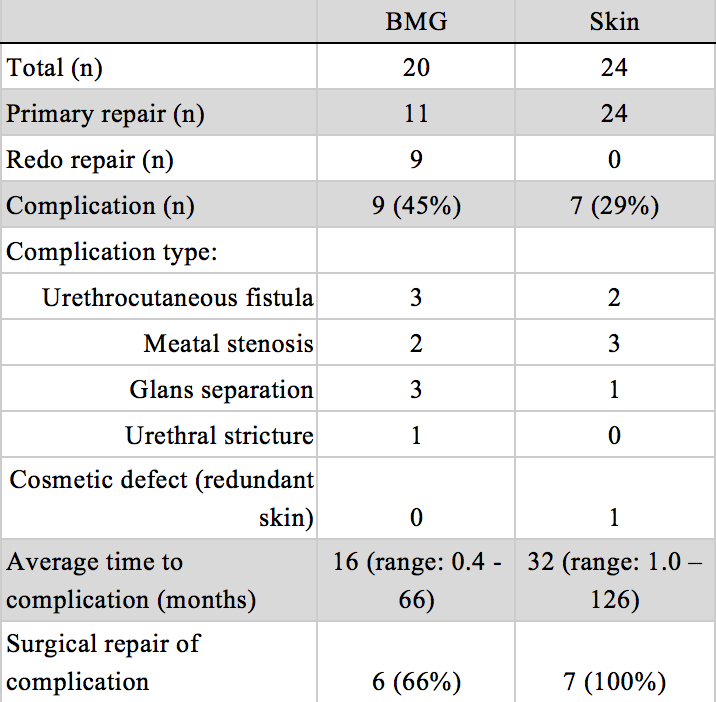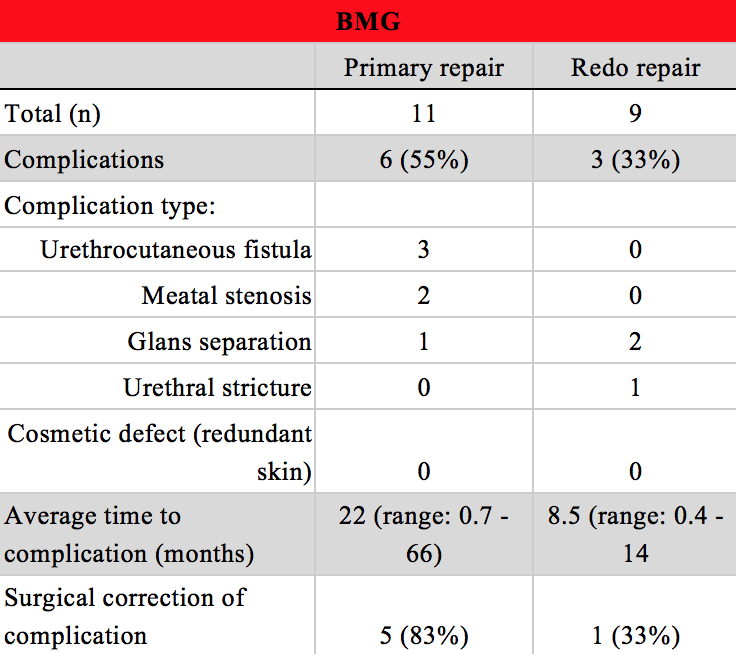Ingrafts in Hypospadias Repair: Longer Term Outcomes
Justin Loloi, BS1, Suzanne Boltz, BS2, Ross M. Decter, MD2.
1Penn State College of Medicine, Hershey, PA, USA, 2Penn State Health Milton S. Hershey Medical Center, Hershey, PA, USA.
BACKGROUND: The technique of hypospadias repair with an ingraft is usually reserved for boys with an unfavorable glans configuration or in previously failed repairs. The graft is typically either buccal mucosa or preputial skin. Although the ingraft technique has been used for some time, there is scarce literature describing its longer term outcomes. Additionally, there is minimal data comparing the two grafts outcomes in primary and reoperative surgery. We conducted a single-center retrospective review of our hypospadias repairs employing ingrafts and describe longer term outcomes. METHODS: We conducted a single-center retrospective review of all patients who underwent hypospadias repair by any one of our pediatric urologic surgeons between 2009 - 2019. Patients were included in the study if they had surgical correction of hypospadias with an ingraft of either buccal mucosa (BMG) or preputial skin. Variables that were collected include whether the repair was a primary or reoperative repair, presence of a complication, type of complication, time to recognition of complication, and whether the complication was surgically corrected. RESULTS: A total of 44 patients met inclusion criteria. Of those, 20 underwent correction with a BMG and 24 with a preputial skin ingraft. Skin ingrafts were used solely for primary repairs whereas the BMG was employed in both primary repairs (n = 11) and revisions (n = 9). Complications in primary repairs occurred in 6 of 11 patients (55%) with BMGs and 7 of 24 patients (29%) with skin grafts (Table 1). Only BMGs were used in reoperative situations and complications occurred in 3 of 9 cases (33%) (Table 2). Overall, 9 patients (45%) with BMG and 7 patients (29%) with preputial skin ingrafts experienced a complication, at an average time of 16 months (range: 0.4 - 66 months) and 32 months (range: 1.0 - 126 months), respectively. Complications included urethrocutaneous fistula, meatal stenosis, glans separation/distraction, and cosmetic defect. Surgical repair of the complication was performed in 6 patients (66%) with BMG ingrafts and 7 patients (100%) with preputial skin ingrafts. Surgical correction of the complication resulted in adequate function in all patients. CONCLUSIONS: Our experience demonstrates significant complication rates using ingrafts in hypospadias repair. Unexpectedly, we show that the BMG used as salvage therapy in revisional hypospadias surgery, had lower observed complication rates when compared to its use in primary repair. Our study describes some of the longest follow-up times in the literature with complications observed even up to 10 years following surgery, therefore, mandating active long term follow-up. This study brings to light the need for more data about the boys undergoing hypospadias repairs with ingrafts and points out the need for further optimization to lower complication rates.


Back to 2019 Abstracts




